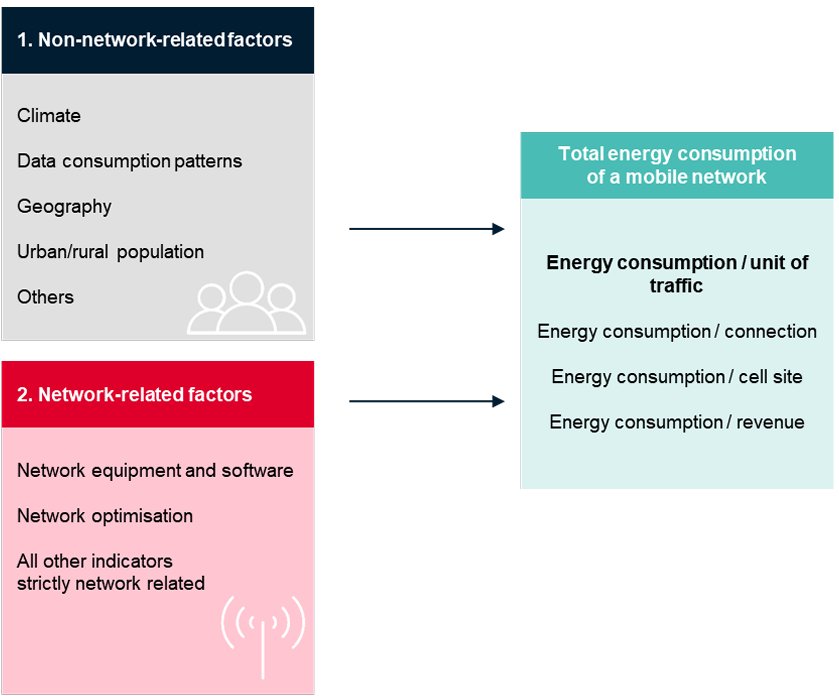There’re many factors that impact the energy consumption in the mobile network operators, some of them related to climate, population density, and data consumption levels, while others are related to the network operators themselves or under its control. So there’re two groups as per GSMA benchmarking:
- Non-network-related variables – those outside the operator’s control (e.g. population distribution and climate).
- Network-related factors – those within the sphere of control of the operator.

GSMA focus area is the second group “ Network-related factors “
Categorising energy consumption
The direct energy consumption of the operators can be categorised into four groups:

- RAN energy consumption – energy consumed by the radio access network (RAN). This includes BTS, Node B, eNodeB and gNodeB energy usage and all associated infrastructure energy usage such as from air-conditioning, inverters and rectifiers. It includes energy usage from repeaters and all energy consumption associated with backhaul transport. It excludes picocell, femtocell and core network energy usage, as well as mobile radio services.
- Core energy consumption – energy consumed by the core network related to the mobile network. This includes the RNC, BSCs, MSC (or MSC-S and MGW), SGSN, GGSN, HLR (including AuC), SMS-C, MMS-C, MME, Serving Gateway and all associated infrastructure energy usage such as from air-conditioning, inverters and rectifiers. It includes energy usage from NOCs and value-added service platforms, and all energy consumption associated with backhaul transport. It excludes energy usage from BSS and OSS, fixed-network equipment, call centres and offices.
- Data centre energy consumption – energy consumed by data centres, which are the physical sites that host operators’ IT, including OSS and BSS and intranet infrastructure. Our analysis only includes energy consumption for data centres owned by an operator; it does not include that related to leased or outsourced capacity from webscale providers such as AWS, Microsoft and Google.
- Other operations – energy consumed by the mobile operator for its own operations. This includes offices, shops, retail activity and logistics.
Findings for Consumption
- The majority of energy (73%) is consumed in the RAN. Providing coverage across thousands of square kilometres, transforming energy into radio waves, and receiving and processing incoming signals is still an energy-intensive area.
- The remaining distribution of consumption comprises data centres (9%), core (13%) and operations (5%).
- While data centres appear to be a low contributor at 9%, it only reflects those owned directly by the operators. The share would be higher if consumption levels from hyper-scale providers and other data centre operators (such as CDNs) were included.
Reference
- “Going green: benchmarking the energy efficiency of mobile.” GSMA Intelligence, June 2021.
